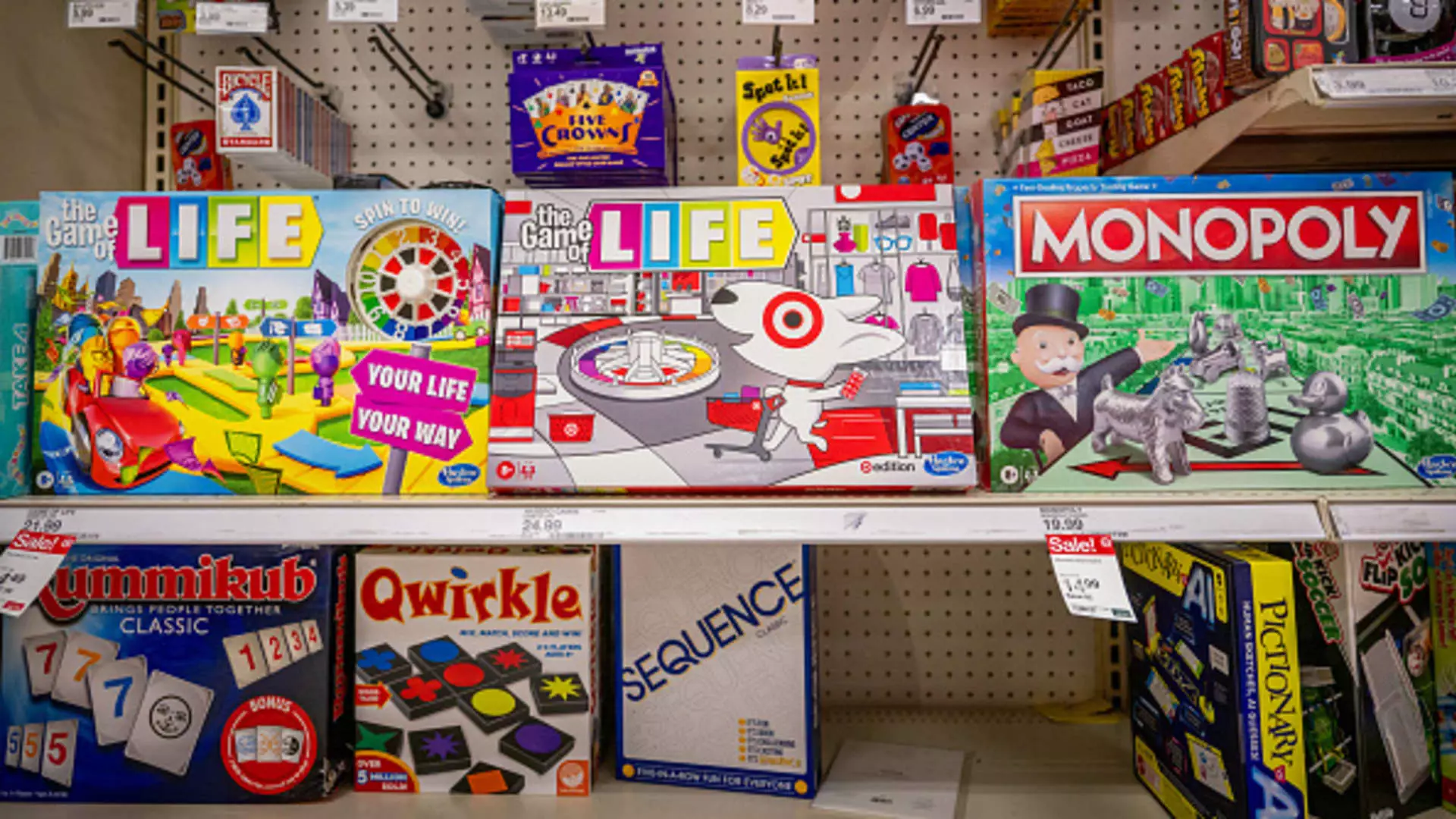In an era where economic stability is hanging by a thread, the ramifications of President Trump’s 145% tariff on Chinese imports loom large over iconic American companies, notably Hasbro. Faced with the specter of potential losses as high as $300 million, the company serves as a microcosm of the broader consequences wrought by the ongoing trade war. Investors are disconcerted, not just by earnings reports that show resilience in spite of pressure, but by the uncertainty surrounding tariffs—an unpredictable backdrop that could alter the economic landscape for years to come.
Hasbro’s leadership is poised yet aware, as CFO Gina Goetter elaborates on various potential outcomes for their financial health. The ambiguous tariff environment contributes to a climate where companies can only guess at future profitability. While some predict dire outcomes, others emphasize strategic fortitude. This tug-of-war reveals two emerging narratives: one of caution and caution that solid management strategies can best mitigate the fallout from this geopolitical chess match.
Consumer Price Implications
The implications of a prolonged tariff regime are dire, with CEO Chris Cocks cautioning that higher tariffs eventually lead to elevated consumer prices. One cannot overstate the irony: the very middle-class families that policymakers often champion as the backbone of the economy could bear the brunt of these tariffs. Toy prices, typically seen as a static aspect of childhood joy, may soon reflect the harsh reality of a trade system gone awry.
The juggernaut of rising costs would likely lead to a domino effect not just within the manufacturing sector but also throughout retail, where parents—already grappling with rising costs of living—will be forced to make difficult choices. The emotional toll extends beyond financial limits; the act of choosing toys for one’s child transforms from a simple pleasure into a burden, marred by the anxiety of an uncertain market.
The Supply Chain Challenge
Hasbro’s predicament highlights the complexities of global manufacturing amidst the backdrop of rising protectionism. Cocks indicates a willingness to explore re-shoring certain products, a strategy that portends local job growth but could also result in considerably higher production costs. The juxtaposition is striking: on one hand, there’s the optimistic promise of bringing jobs back home, while on the other hand, the cold hard facts of increased consumer prices pose a threat to overall sales.
Attempting to navigate this labyrinthine supply chain offers little solace, especially for toys with intricate components, where reliance on Chinese manufacturers remains paramount. Importantly, Cocks is realistic in acknowledging that while some sections of the production line can transition abroad—like pivoting Play-Doh production to Turkey—other elements cannot be easily relocated without severe ramifications for quality and cost. The quandary leaves Hasbro at a crossroads, perfectly emblematic of the tightrope walk corporations face amidst emergency tariffs and trade wars.
A Long Road Ahead
There is a vague sense of hope that Hasbro will find a more predictable trade environment in the future, but this hope feels naive given the current political atmosphere. As Goetter puts it, the company aims to play both defense and offense—an admirable goal, yes, yet riddled with uncertainties. The threat of job losses and decreased profits raises questions about how companies can maintain their core values while operating in a volatile economic environment.
As Hasbro accelerates its $1 billion cost savings plan to stave off the effects of tariffs, it begs the question of whether such measures will ultimately serve the consumer. Price increases are often couched in terms of sustainability but the reality is that families will feel the strain, not just on their wallets but also in the choices they can provide for their children.
In short, Hasbro’s struggle in this trade war is reflective of a much larger battle—one that pits corporate resilience against consumer vulnerability. The landscape is shifting in profound ways, pointing to an upcoming era that challenges the very foundation of how we perceive and consume the products that shape our culture. The fallout presents a glaring opportunity for policy change, but until then, families stand at the precipice, watching as the cost of joy takes a daunting new shape.

